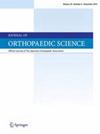Analgesic effectiveness of continuous versus single-injection adductor canal block in addition to continuous popliteal sciatic nerve block for bimalleolar and trimalleolar ankle fracture surgery: Prospective randomized controlled trial
IF 1.5
4区 医学
Q3 ORTHOPEDICS
引用次数: 0
Abstract
Background
The adductor canal block is a well-known procedure for controlling postoperative pain after medial malleolus fracture surgery. Continuous nerve block is a viable option for blocking pain for a longer period although the literature on this subject is scarce. Therefore, this study aimed to compare continuous adductor canal block (cACB) group to single-injection adductor canal block (sACB) group in those with bimalleolar or trimalleolar ankle fractures. The procedure was performed in addition to a continuous sciatic nerve block for postoperative pain relief and patient satisfaction.
Methods
The study included 57 patients who had bimalleolar or trimalleolar ankle fractures and underwent open reduction and internal fixation between August 2016 and June 2018. Each patient received a continuous sciatic nerve block and was divided into two groups: those who received cACB and those who received sACB. Each postoperative pain was scored at 4, 8, 12, 24, 48, and 72 h after surgery. Additionally, the consumption of rescue medications and patient satisfaction were evaluated.
Results
The two groups displayed no disparity in medial side ankle pain at 4 h and 8 h after surgery, but significantly higher pain in the sACB group at 12, 24, 48, and 72 h after surgery. However, there was no difference in the pain at the lateral side of ankle and consumption of rescue medication. In addition, the cACB group showed more satisfaction than the sACB group did.
Conclusion
CACB is better than sACB in terms of postoperative pain control and patient satisfaction. cACB can be used for postoperative pain control in ankle fractures involving the medial malleolus.
Level of evidence
Prospective Randomized Controlled Trial, Level 2.
在进行双极和三极踝关节骨折手术时,除连续腘坐骨神经阻滞外,连续与单次注射内收肌管阻滞的镇痛效果:前瞻性随机对照试验。
背景:内收肌管阻滞是一种众所周知的控制内侧踝骨骨折术后疼痛的方法。虽然相关文献很少,但连续神经阻滞是一种可长期阻滞疼痛的可行方法。因此,本研究旨在比较连续内收肌阻滞(cACB)组与单次注射内收肌阻滞(sACB)组对双极或三极踝关节骨折患者的治疗效果。该手术是在连续坐骨神经阻滞的基础上进行的,以减轻术后疼痛并提高患者满意度:研究纳入了 57 名双极或三极踝关节骨折患者,他们在 2016 年 8 月至 2018 年 6 月期间接受了开放复位和内固定术。每位患者都接受了连续坐骨神经阻滞,并分为两组:接受 cACB 的患者和接受 sACB 的患者。在术后 4、8、12、24、48 和 72 小时分别对术后疼痛进行评分。此外,还对抢救药物的用量和患者的满意度进行了评估:结果:两组患者在术后 4 小时和 8 小时的内侧踝关节疼痛没有差异,但在术后 12、24、48 和 72 小时,sACB 组的疼痛明显较重。然而,踝关节外侧的疼痛和抢救用药量并无差异。此外,cACB 组的满意度高于 sACB 组:cACB在术后疼痛控制和患者满意度方面优于sACB。cACB可用于涉及内侧踝骨骨折的术后疼痛控制:前瞻性随机对照试验,2 级。
本文章由计算机程序翻译,如有差异,请以英文原文为准。
求助全文
约1分钟内获得全文
求助全文
来源期刊

Journal of Orthopaedic Science
医学-整形外科
CiteScore
3.00
自引率
0.00%
发文量
290
审稿时长
90 days
期刊介绍:
The Journal of Orthopaedic Science is the official peer-reviewed journal of the Japanese Orthopaedic Association. The journal publishes the latest researches and topical debates in all fields of clinical and experimental orthopaedics, including musculoskeletal medicine, sports medicine, locomotive syndrome, trauma, paediatrics, oncology and biomaterials, as well as basic researches.
 求助内容:
求助内容: 应助结果提醒方式:
应助结果提醒方式:


